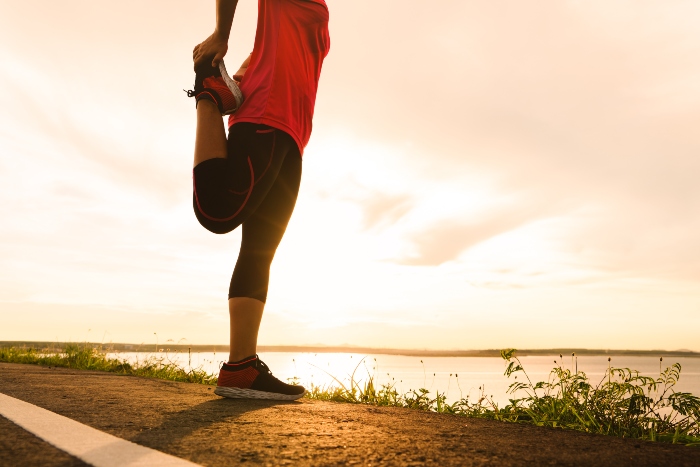What are the benefits of cooling down after exercising? Cooling down after exercising is an important part of any workout routine, and it offers several benefits for both the body and the mind. Here are some key benefits of cooling down after exercising:

Reduced Heart Rate
The best benefit is cooling down gradually lowers your heart rate, helping it return to its normal resting rate. Abruptly stopping intense exercise can lead to a sudden drop in heart rate, potentially causing dizziness or lightheadedness.
Prevents Dizziness and Fainting
Cooling down allows your cardiovascular system to adjust slowly, reducing the risk of post-exercise hypotension (low blood pressure), which can cause dizziness or fainting.
Promotes Recovery
Again, cooling down helps to gradually reduce the heart rate and blood flow back to resting levels, which aids in the recovery process. It helps to clear out lactic acid and other waste products that accumulate in the muscles during exercise, reducing muscle soreness and fatigue.
Reduces Risk of Injury
It allows your body to transition from high-intensity exercise to a state of rest more gradually, reducing the risk of sudden changes in blood pressure and minimizing the risk of injury. It also helps to prevent blood pooling in the extremities, which can lead to dizziness or fainting.
Muscle Recovery
Light aerobic activities during the cool-down phase help to flush out metabolic waste products, such as lactic acid, from muscles. This reduces the likelihood of muscle stiffness and soreness after the workout.
Decreased Lactic Acid Build-Up
Also, cooling down aids in the removal of lactic acid, a waste product that accumulates in muscles during vigorous exercise. Lactic acid build-up can contribute to muscle fatigue and soreness, so cooling down can help alleviate these symptoms.
Improves Flexibility
Stretching during the cool-down phase when muscles are warm can help improve flexibility, which can enhance overall performance and reduce the risk of muscle imbalances and injuries. It also helps to maintain and improve joint range of motion.
Enhances Circulation
It also aids in the regulation of blood flow, helping to return blood to the heart and restore normal circulation. This can help prevent blood from pooling in the working muscles, reducing the risk of muscle cramps and promoting optimal cardiovascular health.

Facilitates Relaxation
Cooling down can help you transition from a state of high physical activity to a more relaxed state. It can help lower stress levels and promote relaxation, helping to reduce post-exercise adrenaline and cortisol levels, and promoting a sense of well-being.
Mental Benefits
It can also have mental benefits. It allows for a gradual transition from the high-intensity exercise to a state of rest, helping to calm the mind and promote mental relaxation. It can also provide a sense of accomplishment and completion to your workout, which can boost motivation and adherence to your exercise routine.
Enhanced Performance
Regularly cooling down after workouts can improve overall exercise performance by preparing your body for the next session and reducing the impact of cumulative fatigue.
Forming a Routine
Incorporating a cool-down into your workout routine creates a habit that reinforces the importance of both the workout itself and the recovery process.
In conclusion, incorporating a proper cool-down routine into your exercise regimen can offer numerous benefits, including improved recovery, reduced risk of injury, enhanced flexibility, better circulation, relaxation, and mental well-being. It’s an important part of a well-rounded workout routine and should not be overlooked.

